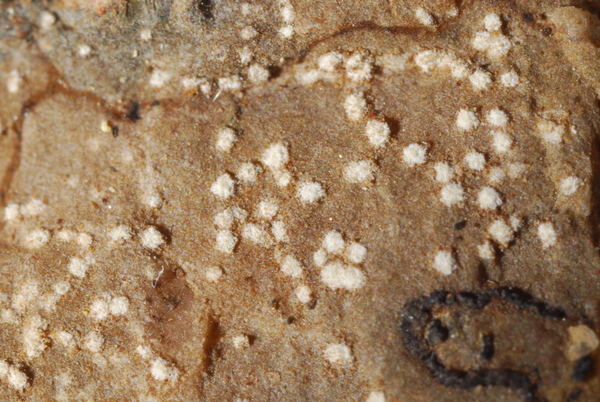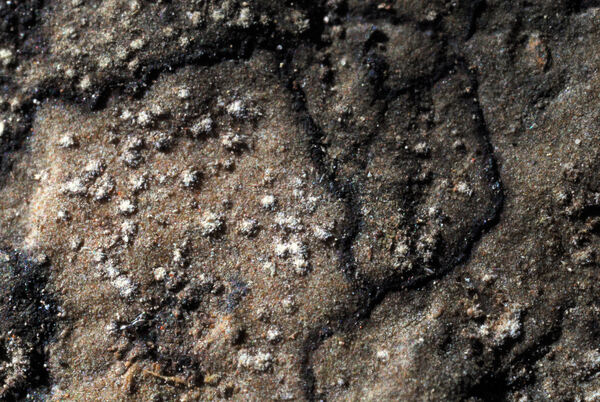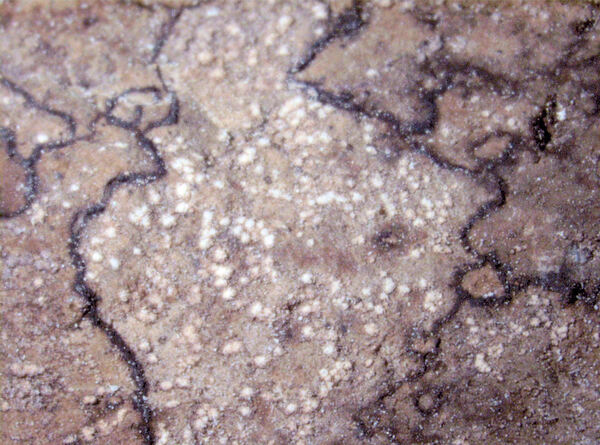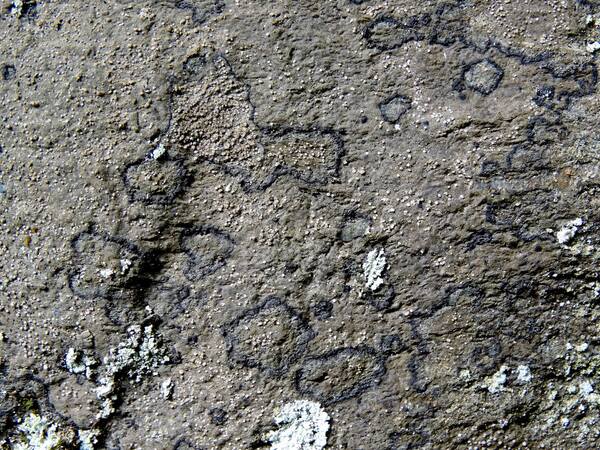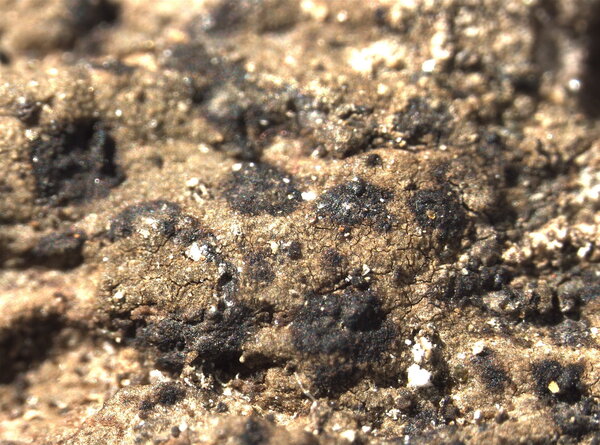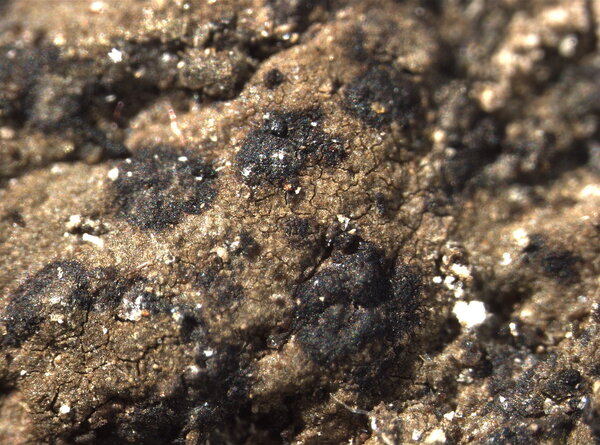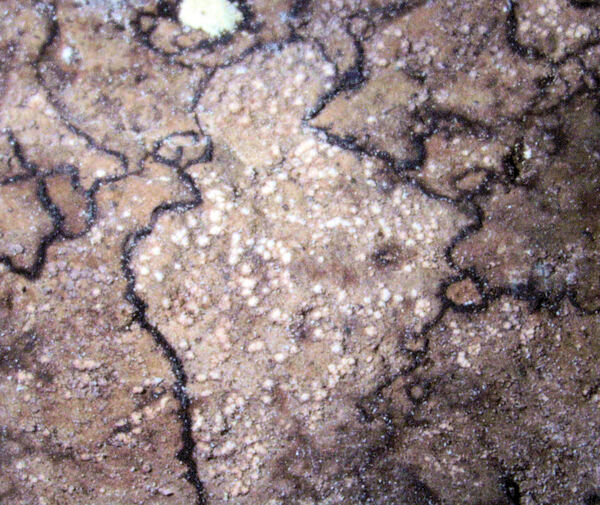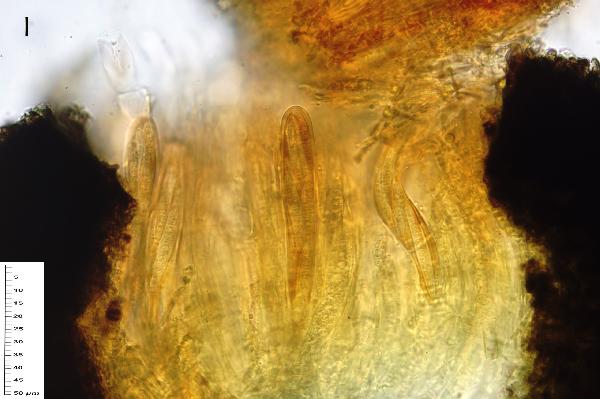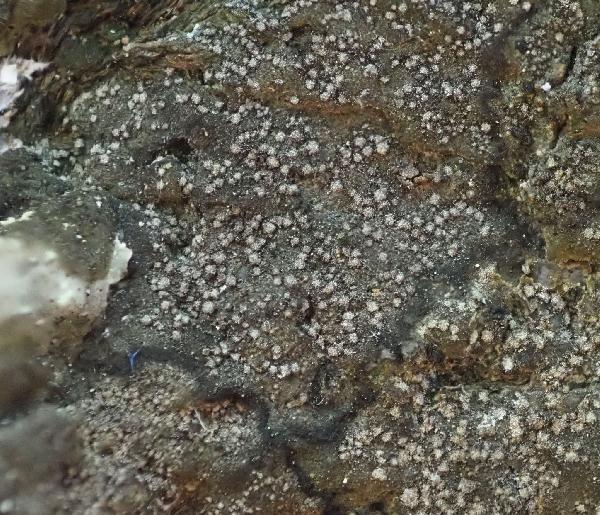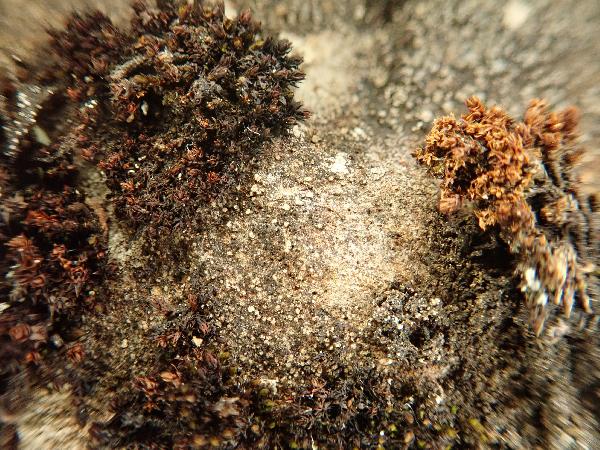Enterographa zonata (Körb.) Torrente & Egea
Källsten ex Torrente & Egea, Bibl. Lichenol., 32: 198, 1989. Basionym: Opegrapha zonata Körb. - Syst. Lich. Germ., 1855.
Synonyms: Lecanactis zonata (Körb.) A. Massal.; Opegrapha horistica (Leight.) P. Syd.; Verrucaria horistica Leight.
Distribution: N - Frl (Tretiach 2004), TAA (Nascimbene 2006c, 2014, Nascimbene & al. 2014, 2022), Lomb, Piem (Isocrono & al. 2004), Emil (Tretiach & al. 2008, Fariselli & al. 2020), Lig (Brunialti & al. 1999). C - Tosc, Sar. S - Bas (Ravera & al. 2019b), Cal (Puntillo 1996).
Description: Thallus crustose, endo- to episubstratic in non-sorediate parts, thin to thick, continuous, rimose to indistinctly areolate, pale to dark brown, often with a pale violet tinge, sorediate, delimited from conspecific thalli by a black prothallus and often forming extended mosaics. Soralia punctiform to maculiform, usually discrete, 0.2-0.5(-1) mm in diam., pale brown to brown-violet, much paler when eroded and then contrasting with the darker thallus; soredia farinose. Apothecia rare, at first rounded and almost perithecioid, finally lirelliform, 0.2-0.6(-1) x 0.1-0.3 mm, black, unbranched, with a slit-like disc. Exciple black in outer part, pale at base; epithecium brown; hymenium colourless, 75-90 µm high, I+ blue; hypothecium pale. Asci 8-spored, cylindrical or cylindrical-clavate, fissitunicate, the apical dome with a short ocular chamber surrounded by a minute, K/I+ dark blue ring. Ascospores (4-)5-8(-11)-septate, hyaline, fusiform, pointed at apices, 22-36(-39) x 3-6 µm. Pycnidia black, immersed. Conidia bacilliform, straight, 5-6 x c. 0.5 µm. Photobiont trentepohlioid. Spot tests: thallus and soralia K-, C-, KC-, P-; soralia UV+ deep blue, K/UV+ mauve. Chemistry: confluentic, 2'-0-methylmicrophyllinic and 2'-0-methylperlatolic acids. Note: a temperate to southern boreal-montane, perhaps circumpolar lichen found on vertical to rain-sheltered surfaces of hard siliceous rocks in deep gorges or in mature forests, very rarely on bark, mostly in the mountains. See also Sparrius (2004).
Growth form: Crustose
Substrata: rocks
Photobiont: Trentepohlia
Reproductive strategy: mainly asexual, by soredia, or soredia-like structures (e.g. blastidia)
Most common in areas with a humid-warm climate (e.g. most of Tyrrenian Italy)
Commonnes-rarity: (info)
Alpine belt: absent
Subalpine belt: absent
Oromediterranean belt: absent
Montane belt: rather rare
Submediterranean belt: extremely rare
Padanian area: absent
Humid submediterranean belt: extremely rare
Humid mediterranean belt: absent
Dry mediterranean belt: absent
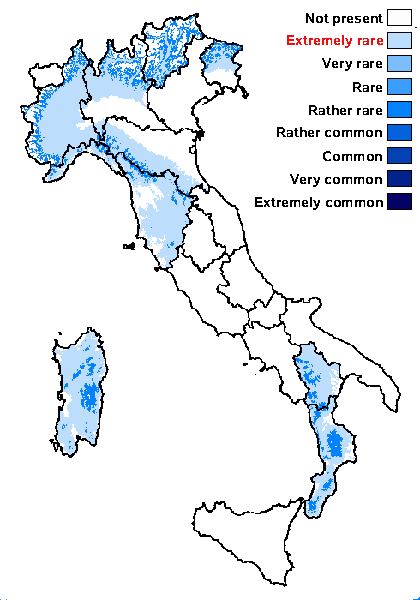
Predictive model
Herbarium samples
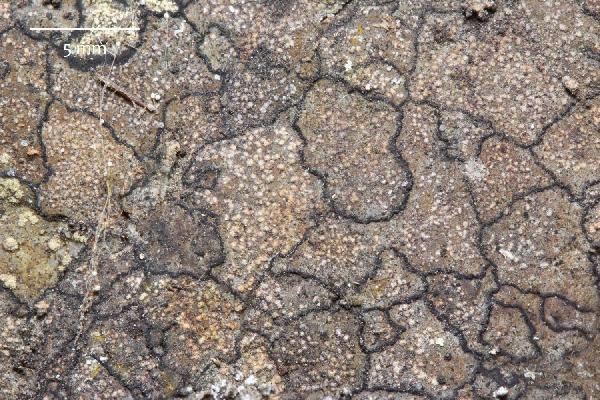
Marta Gonzalez Garcia - Centro de Estudios Micologicos Asturianos
Spain, Soto de Agües (Sobrescobio-Asturias), 3-I-2024, en rocas ácidas, leg. & det. M. González.
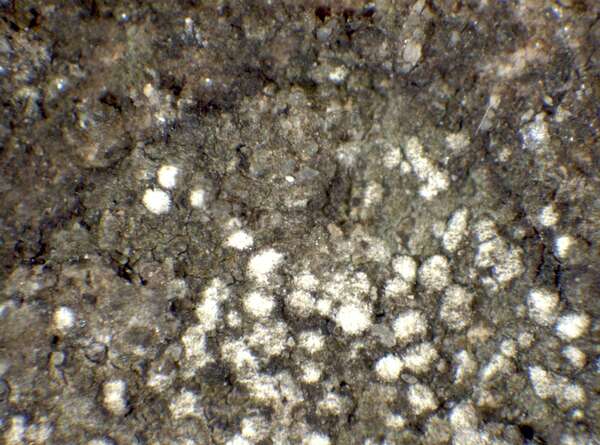

P.L. Nimis; Owner: Department of Life Sciences, University of Trieste
Herbarium: TSB (34258)
2001/12/08
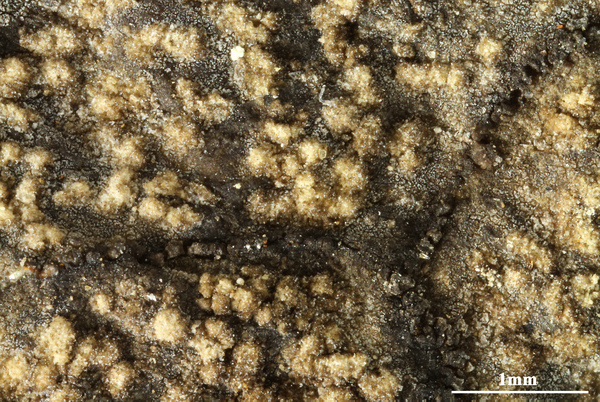

Felix Schumm - CC BY-SA4.0
[20888], Austria. Kärnten, Eastern Alps, Styrian Fringe Mountains, Koralpe, 15.2 km west of Deutschlandsberg, 46°50'40'' N, 15°1'05'' E, 1750-1800 m, gneissic rocks. Leg. W. Obermayer (no 13944), B. Coppins, J. Hafellner,21.03.2012, det. W. Obermayer. LICHENOTHECA GRAECENSIS NR. 1153


Felix Schumm - CC BY-SA4.0
[20888], Austria. Kärnten, Eastern Alps, Styrian Fringe Mountains, Koralpe, 15.2 km west of Deutschlandsberg, 46°50'40'' N, 15°1'05'' E, 1750-1800 m, gneissic rocks. Leg. W. Obermayer (no 13944), B. Coppins, J. Hafellner,21.03.2012, det. W. Obermayer. LICHENOTHECA GRAECENSIS NR. 1153
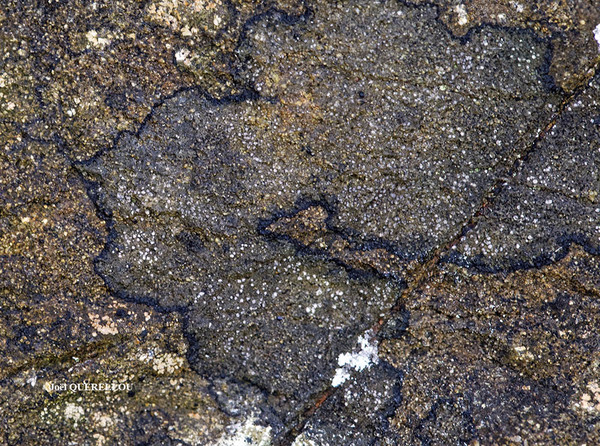
Joël Querellou - Source: http://www.lichensmaritimes.org/index.php?task=fiche&lichen=567&lang=en
France, Loch
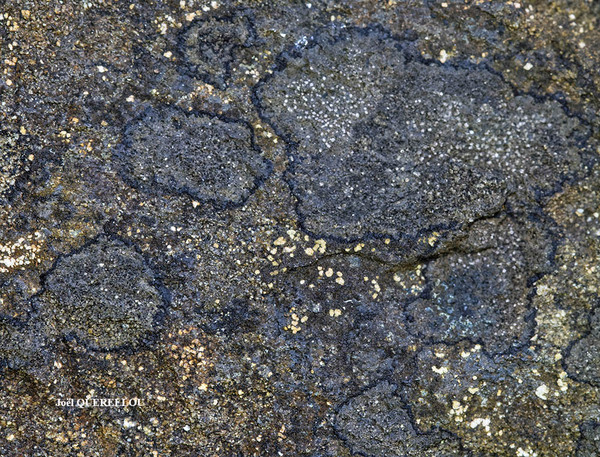
Joël Querellou - Source: http://www.lichensmaritimes.org/index.php?task=fiche&lichen=567&lang=en
France, en mosaïque avec Opegrapha gyrocarpa et Opegrapha saxigena Sur la face à l'ombre d'un rocher humide en forêt Le Loc'h
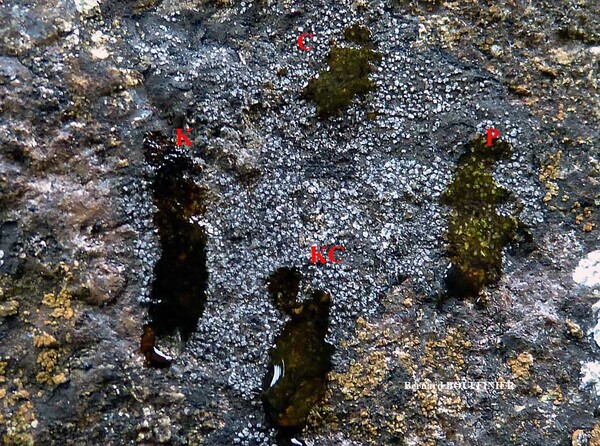
Bernard Bouffinier - Source: http://www.lichensmaritimes.org/index.php?task=fiche&lichen=567&lang=en
France, Le Faouet
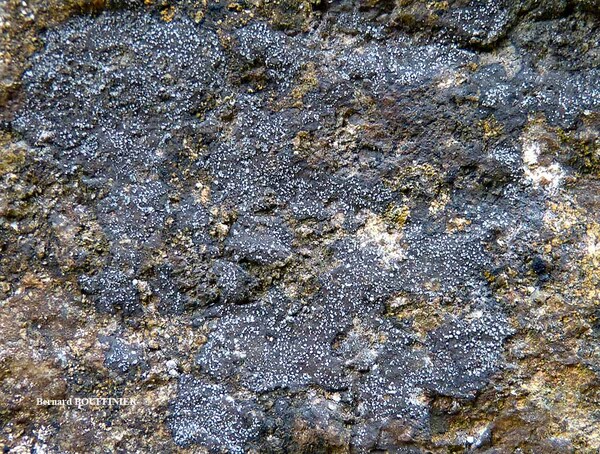
Bernard Bouffinier - Source: http://www.lichensmaritimes.org/index.php?task=fiche&lichen=567&lang=en
France, Le Faouet
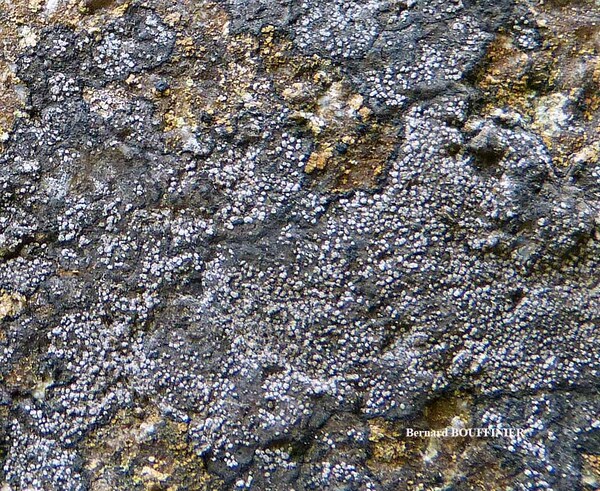
Bernard Bouffinier - Source: http://www.lichensmaritimes.org/index.php?task=fiche&lichen=567&lang=en
France, Le Faouet
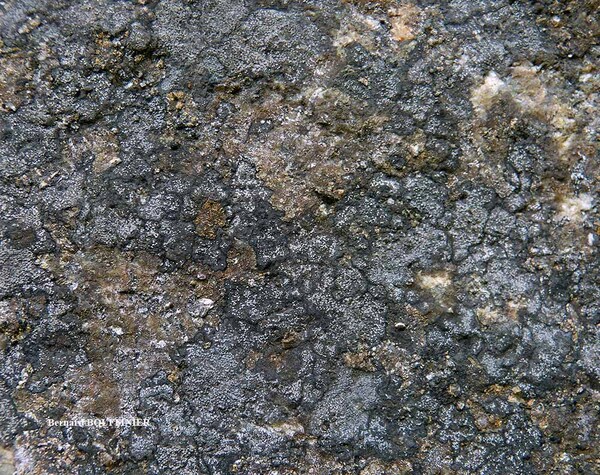
Bernard Bouffinier - Source: http://www.lichensmaritimes.org/index.php?task=fiche&lichen=567&lang=en
France, Le Faouet
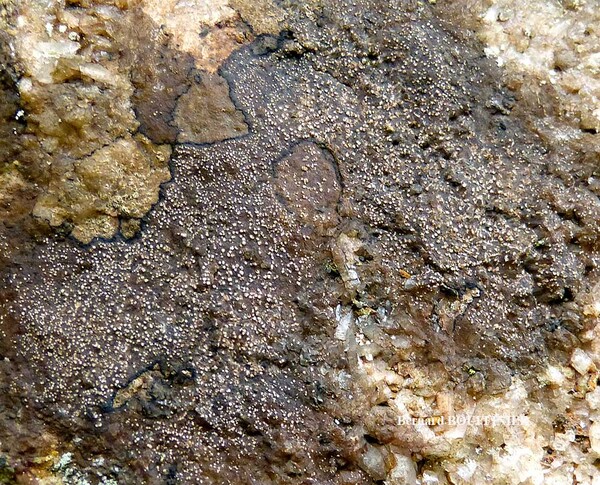
Bernard Bouffinier - Source: http://www.lichensmaritimes.org/index.php?task=fiche&lichen=567&lang=en
France, St. Jean
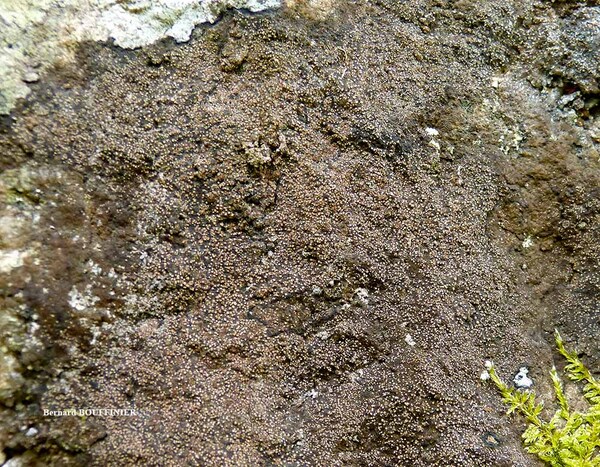
Bernard Bouffinier - Source: http://www.lichensmaritimes.org/index.php?task=fiche&lichen=567&lang=en
France, St. Jean
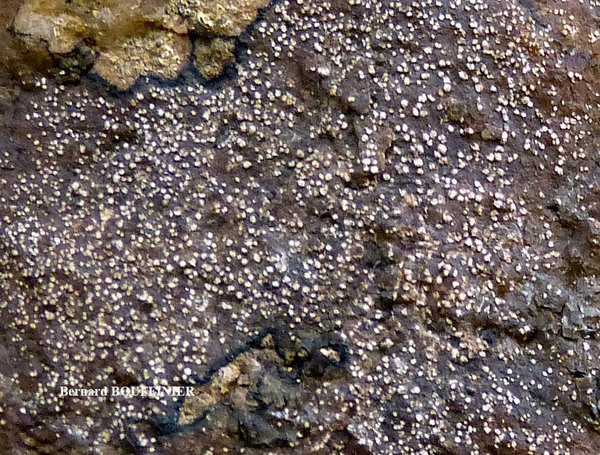
Bernard Bouffinier - Source: http://www.lichensmaritimes.org/index.php?task=fiche&lichen=567&lang=en
France, St. Jean
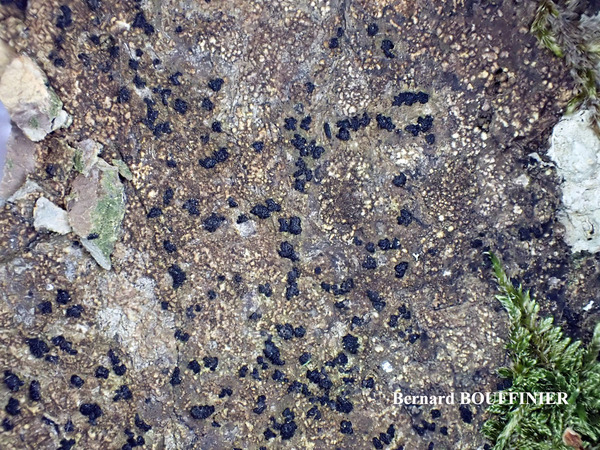
Bernard Bouffinier - Source: http://www.lichensmaritimes.org/index.php?task=fiche&lichen=567&lang=en
France, Cranou
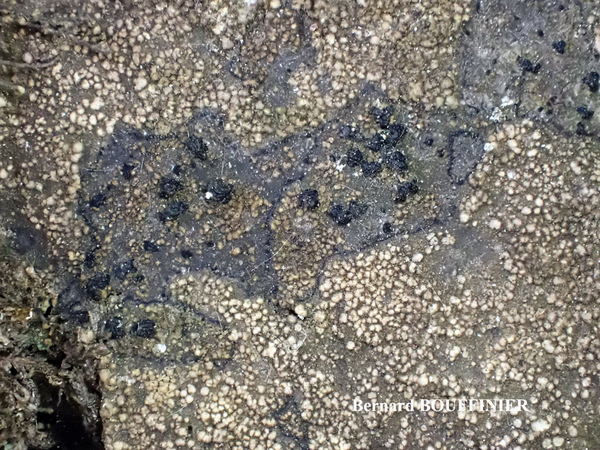
Bernard Bouffinier - Source: http://www.lichensmaritimes.org/index.php?task=fiche&lichen=567&lang=en
France, Cranou
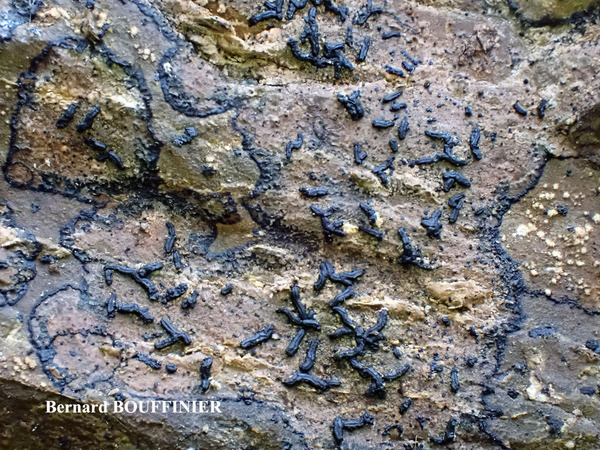
Bernard Bouffinier - Source: http://www.lichensmaritimes.org/index.php?task=fiche&lichen=567&lang=en
France, Cranou
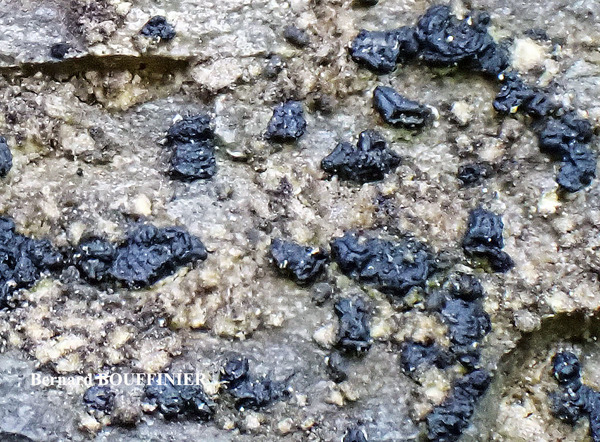
Bernard Bouffinier - Source: http://www.lichensmaritimes.org/index.php?task=fiche&lichen=567&lang=en
France, Cranou
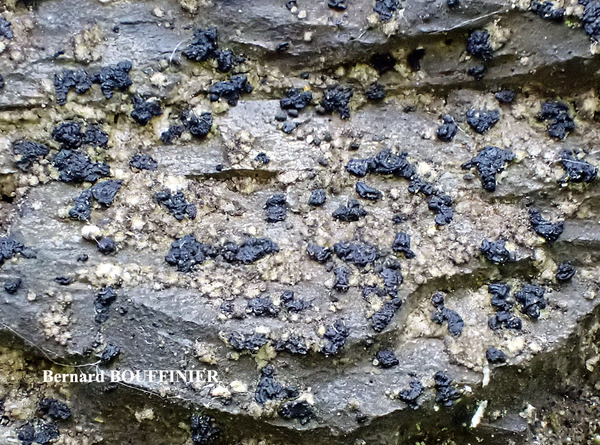
Bernard Bouffinier - Source: http://www.lichensmaritimes.org/index.php?task=fiche&lichen=567&lang=en
France, Cranou

Jacques Haine - Source: http://www.lichensmaritimes.org/index.php?task=fiche&lichen=567&lang=en
France, Ardennes
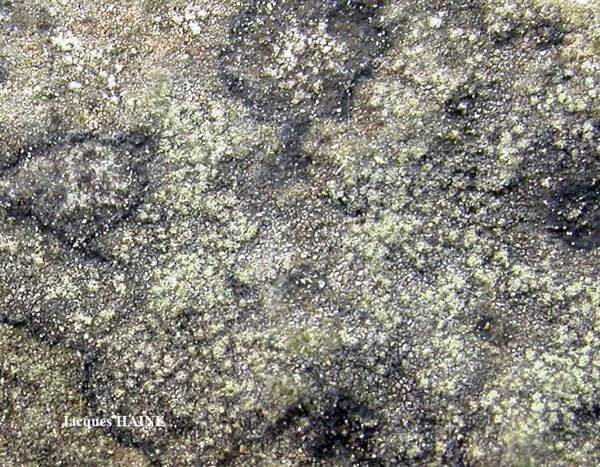
Jacques Haine - Source: http://www.lichensmaritimes.org/index.php?task=fiche&lichen=567&lang=en
France, Ardennes
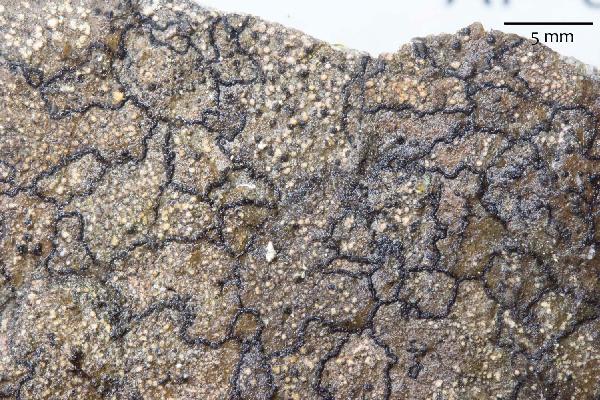
Marta Gonzalez Garcia - Centro de Estudios Micologicos Asturianos
Spain, Soto de Agües (Sobrescobio-Asturias), 3-I-2024, en rocas ácidas, leg. & det. M. González.
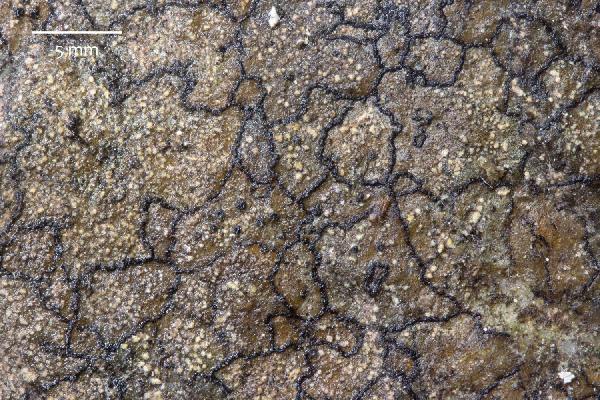
Marta Gonzalez Garcia - Centro de Estudios Micologicos Asturianos
Spain, Soto de Agües (Sobrescobio-Asturias), 3-I-2024, en rocas ácidas, leg. & det. M. González.
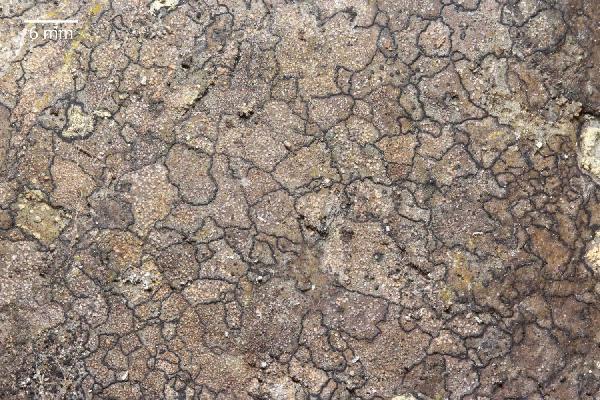
Marta Gonzalez Garcia - Centro de Estudios Micologicos Asturianos
Spain, Soto de Agües (Sobrescobio-Asturias), 3-I-2024, en rocas ácidas, leg. & det. M. González.

Marta Gonzalez Garcia - Centro de Estudios Micologicos Asturianos
Spain, Soto de Agües (Sobrescobio-Asturias), 3-I-2024, en rocas ácidas, leg. & det. M. González.
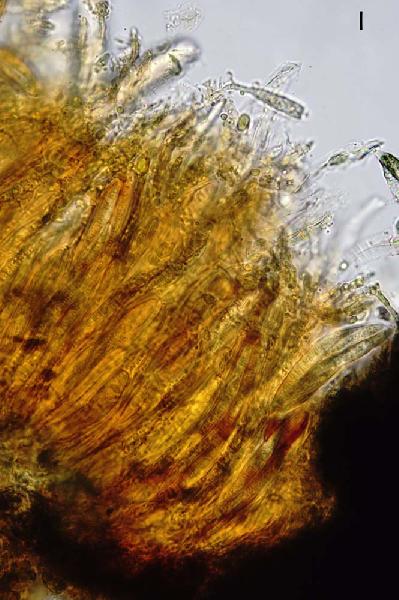
Marta Gonzalez Garcia - Centro de Estudios Micologicos Asturianos
Spain, Soto de Agües (Sobrescobio-Asturias), 3-I-2024, en rocas ácidas, leg. & det. M. González.
Growth form: Crustose
Substrata: rocks
Photobiont: Trentepohlia
Reproductive strategy: mainly asexual, by soredia, or soredia-like structures (e.g. blastidia)
Most common in areas with a humid-warm climate (e.g. most of Tyrrenian Italy)
Commonnes-rarity: (info)
Alpine belt: absent
Subalpine belt: absent
Oromediterranean belt: absent
Montane belt: rather rare
Submediterranean belt: extremely rare
Padanian area: absent
Humid submediterranean belt: extremely rare
Humid mediterranean belt: absent
Dry mediterranean belt: absent

Predictive model
| Herbarium samples |

Marta Gonzalez Garcia - Centro de Estudios Micologicos Asturianos
Spain, Soto de Agües (Sobrescobio-Asturias), 3-I-2024, en rocas ácidas, leg. & det. M. González.


P.L. Nimis; Owner: Department of Life Sciences, University of Trieste
Herbarium: TSB (34258)
2001/12/08


Felix Schumm - CC BY-SA4.0
[20888], Austria. Kärnten, Eastern Alps, Styrian Fringe Mountains, Koralpe, 15.2 km west of Deutschlandsberg, 46°50'40'' N, 15°1'05'' E, 1750-1800 m, gneissic rocks. Leg. W. Obermayer (no 13944), B. Coppins, J. Hafellner,21.03.2012, det. W. Obermayer. LICHENOTHECA GRAECENSIS NR. 1153


Felix Schumm - CC BY-SA4.0
[20888], Austria. Kärnten, Eastern Alps, Styrian Fringe Mountains, Koralpe, 15.2 km west of Deutschlandsberg, 46°50'40'' N, 15°1'05'' E, 1750-1800 m, gneissic rocks. Leg. W. Obermayer (no 13944), B. Coppins, J. Hafellner,21.03.2012, det. W. Obermayer. LICHENOTHECA GRAECENSIS NR. 1153

Joël Querellou - Source: http://www.lichensmaritimes.org/index.php?task=fiche&lichen=567&lang=en
France, Loch

Joël Querellou - Source: http://www.lichensmaritimes.org/index.php?task=fiche&lichen=567&lang=en
France, en mosaïque avec Opegrapha gyrocarpa et Opegrapha saxigena Sur la face à l'ombre d'un rocher humide en forêt Le Loc'h

Bernard Bouffinier - Source: http://www.lichensmaritimes.org/index.php?task=fiche&lichen=567&lang=en
France, Le Faouet

Bernard Bouffinier - Source: http://www.lichensmaritimes.org/index.php?task=fiche&lichen=567&lang=en
France, Le Faouet

Bernard Bouffinier - Source: http://www.lichensmaritimes.org/index.php?task=fiche&lichen=567&lang=en
France, Le Faouet

Bernard Bouffinier - Source: http://www.lichensmaritimes.org/index.php?task=fiche&lichen=567&lang=en
France, Le Faouet

Bernard Bouffinier - Source: http://www.lichensmaritimes.org/index.php?task=fiche&lichen=567&lang=en
France, St. Jean

Bernard Bouffinier - Source: http://www.lichensmaritimes.org/index.php?task=fiche&lichen=567&lang=en
France, St. Jean

Bernard Bouffinier - Source: http://www.lichensmaritimes.org/index.php?task=fiche&lichen=567&lang=en
France, St. Jean

Bernard Bouffinier - Source: http://www.lichensmaritimes.org/index.php?task=fiche&lichen=567&lang=en
France, Cranou

Bernard Bouffinier - Source: http://www.lichensmaritimes.org/index.php?task=fiche&lichen=567&lang=en
France, Cranou

Bernard Bouffinier - Source: http://www.lichensmaritimes.org/index.php?task=fiche&lichen=567&lang=en
France, Cranou

Bernard Bouffinier - Source: http://www.lichensmaritimes.org/index.php?task=fiche&lichen=567&lang=en
France, Cranou

Bernard Bouffinier - Source: http://www.lichensmaritimes.org/index.php?task=fiche&lichen=567&lang=en
France, Cranou

Jacques Haine - Source: http://www.lichensmaritimes.org/index.php?task=fiche&lichen=567&lang=en
France, Ardennes

Jacques Haine - Source: http://www.lichensmaritimes.org/index.php?task=fiche&lichen=567&lang=en
France, Ardennes

Marta Gonzalez Garcia - Centro de Estudios Micologicos Asturianos
Spain, Soto de Agües (Sobrescobio-Asturias), 3-I-2024, en rocas ácidas, leg. & det. M. González.

Marta Gonzalez Garcia - Centro de Estudios Micologicos Asturianos
Spain, Soto de Agües (Sobrescobio-Asturias), 3-I-2024, en rocas ácidas, leg. & det. M. González.

Marta Gonzalez Garcia - Centro de Estudios Micologicos Asturianos
Spain, Soto de Agües (Sobrescobio-Asturias), 3-I-2024, en rocas ácidas, leg. & det. M. González.

Marta Gonzalez Garcia - Centro de Estudios Micologicos Asturianos
Spain, Soto de Agües (Sobrescobio-Asturias), 3-I-2024, en rocas ácidas, leg. & det. M. González.

 INDEX FUNGORUM
INDEX FUNGORUM
 GBIF
GBIF
 DOLICHENS
DOLICHENS
